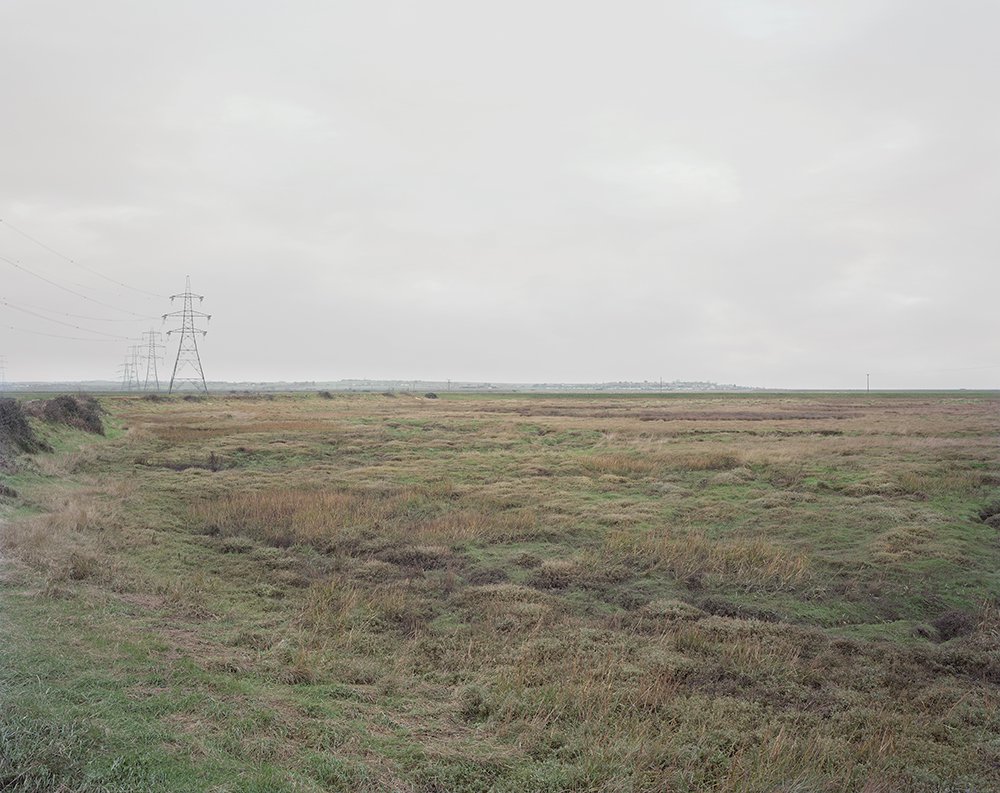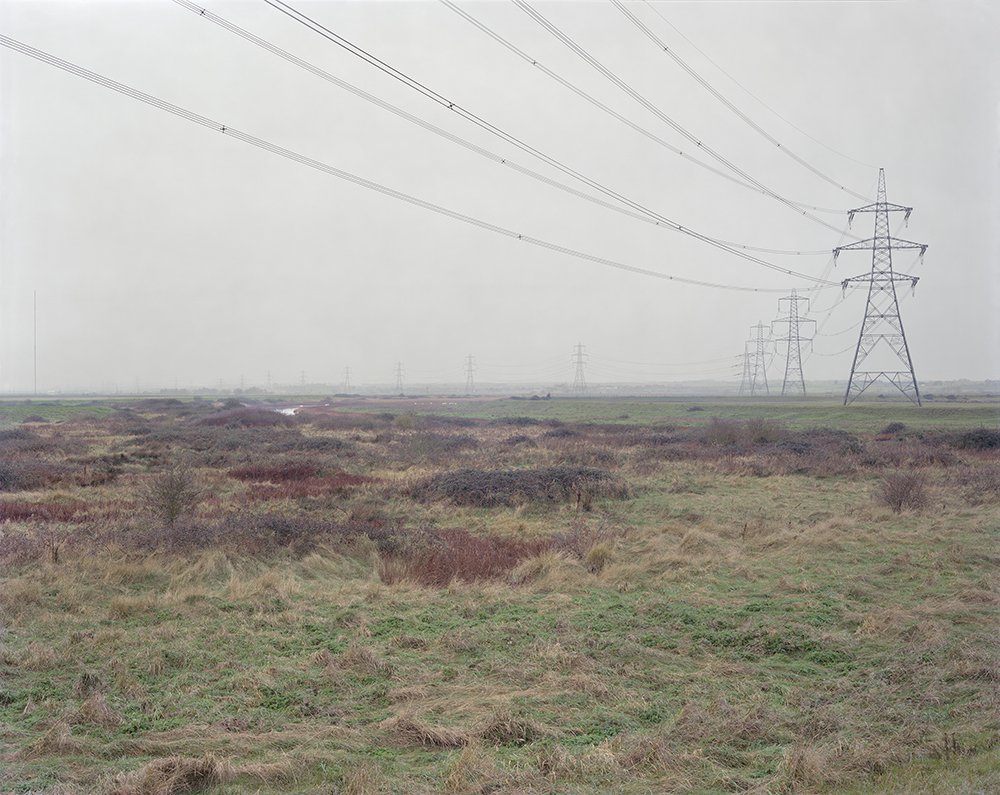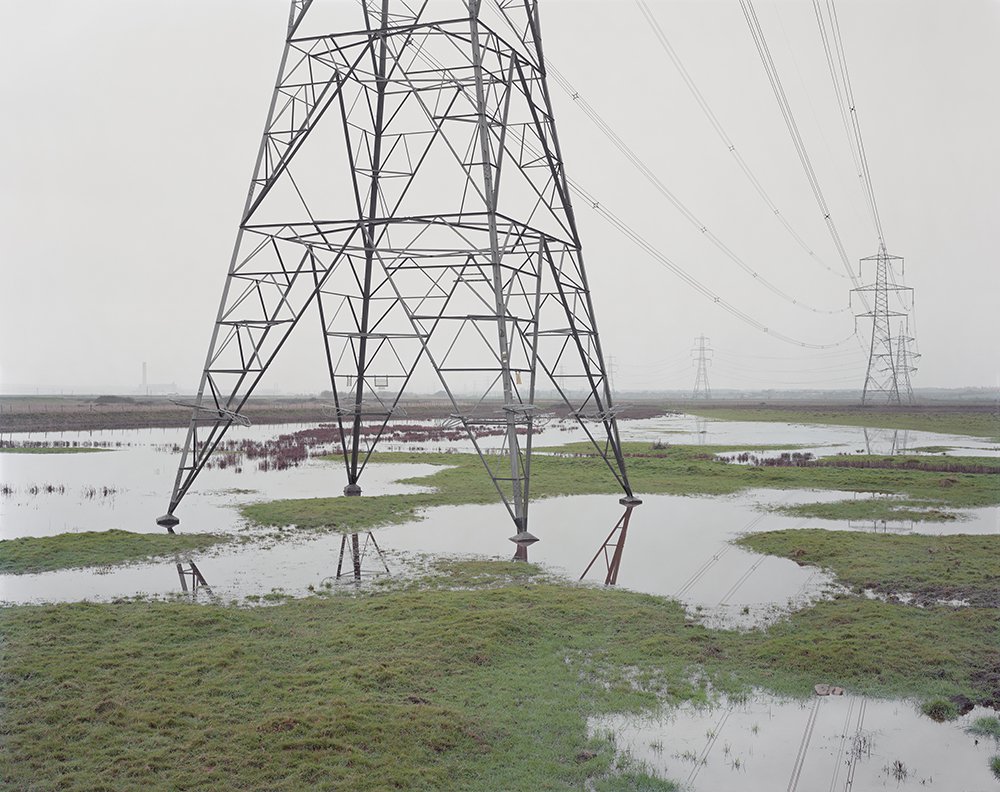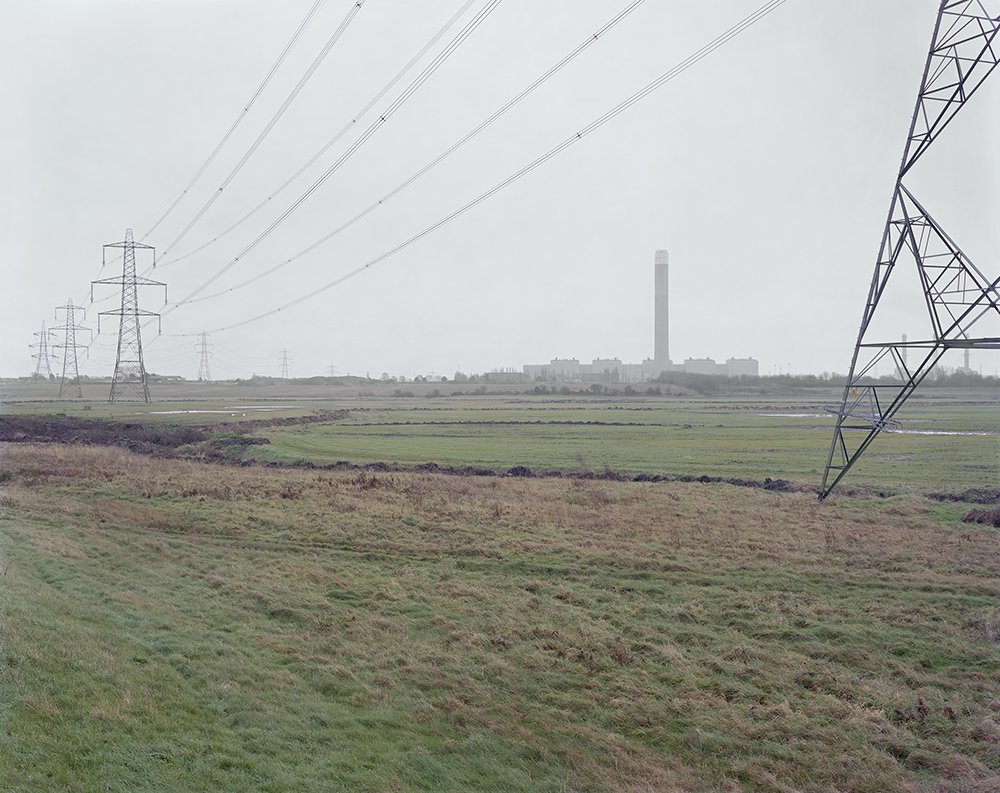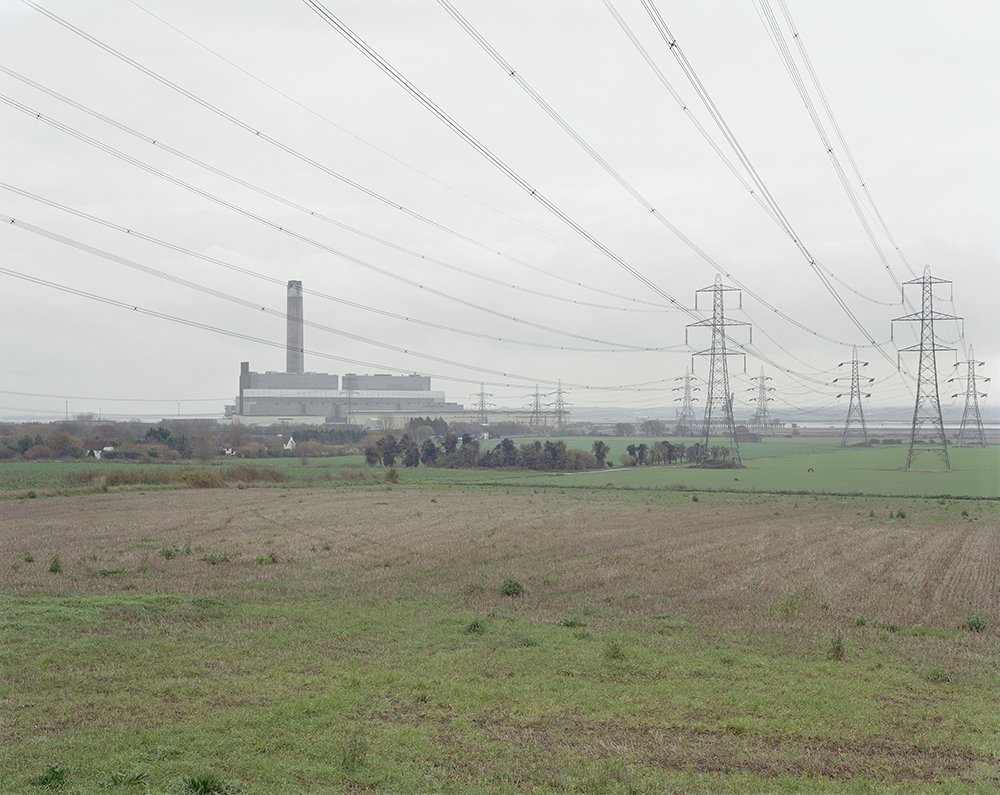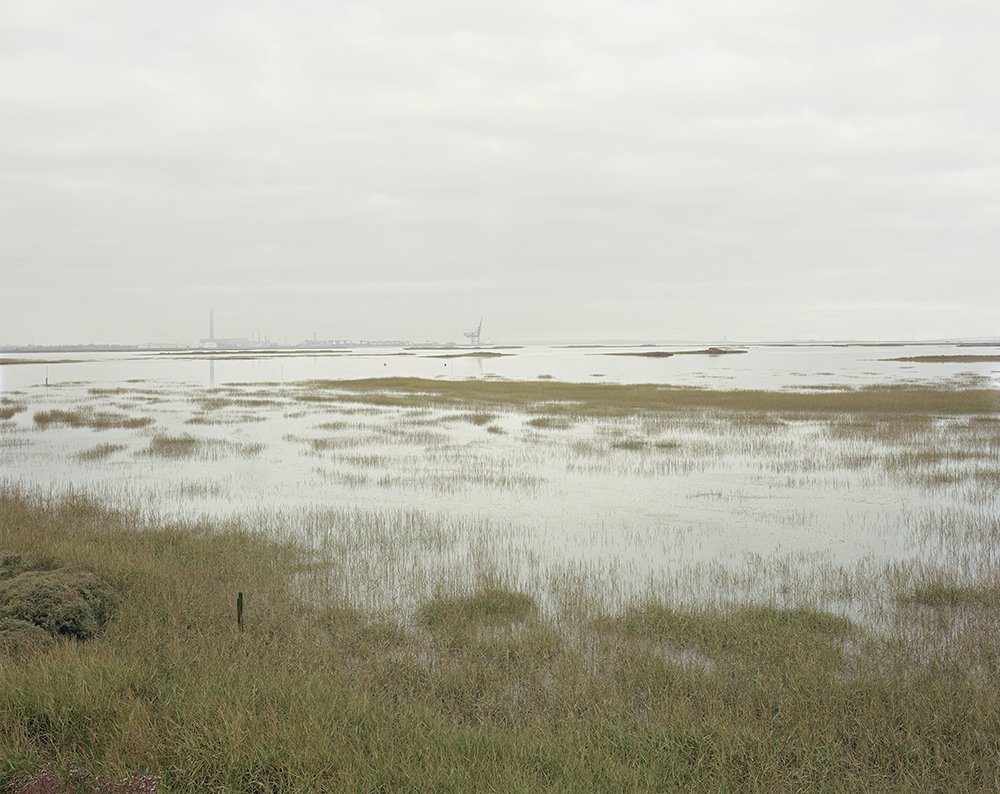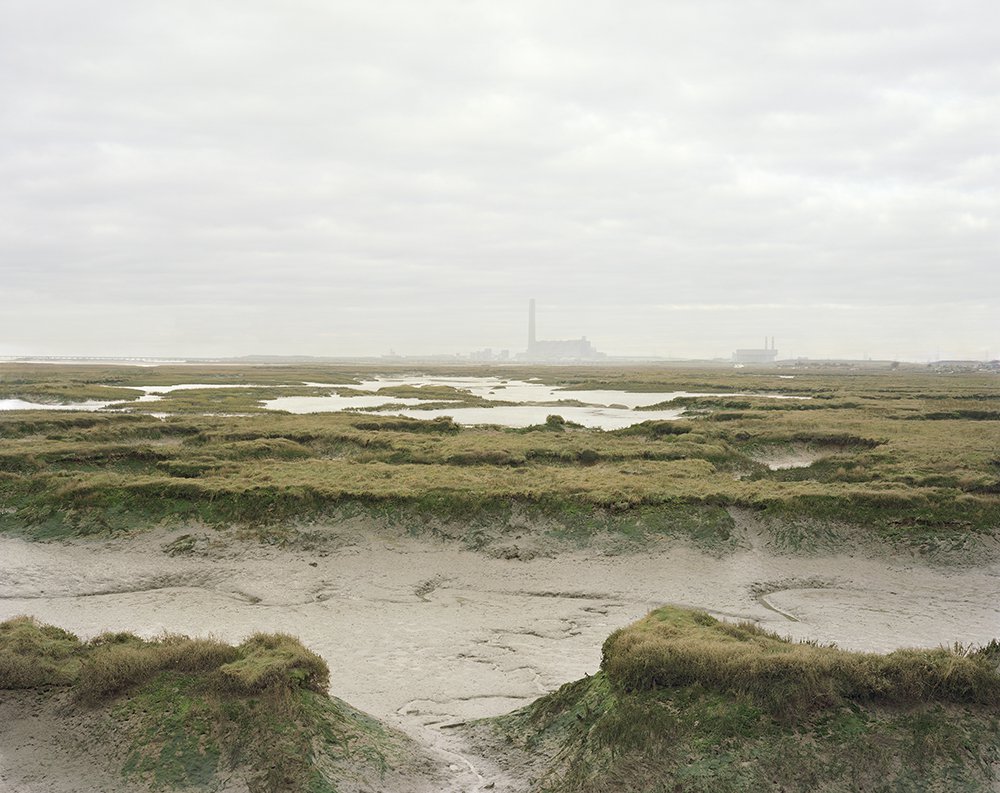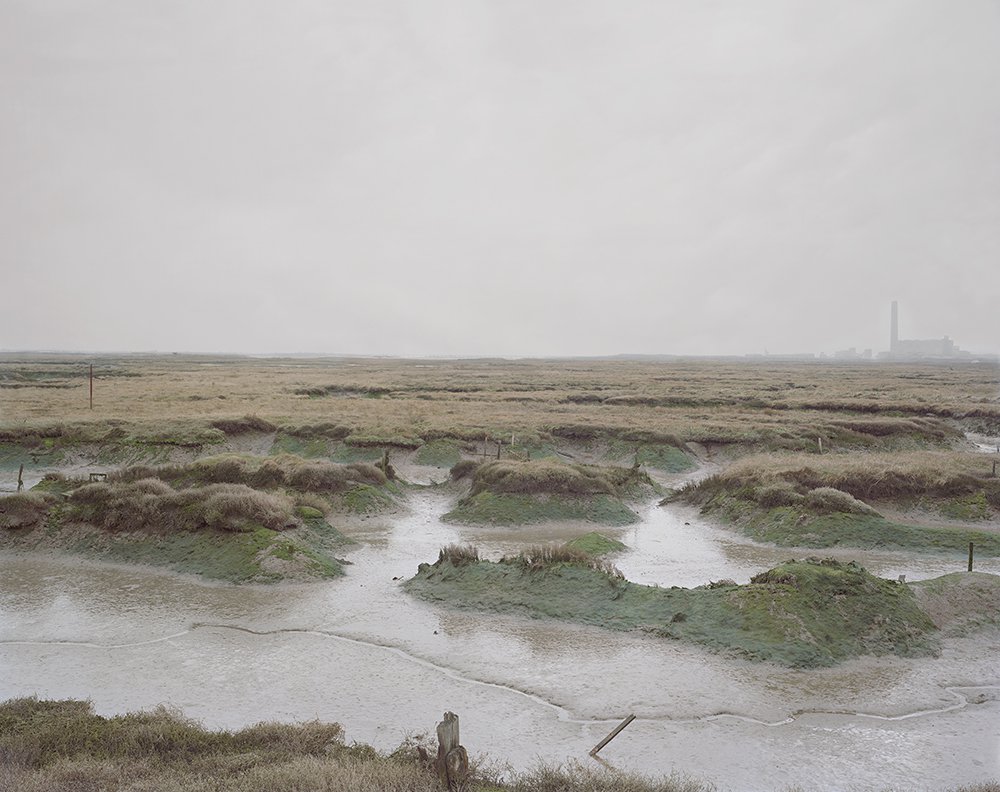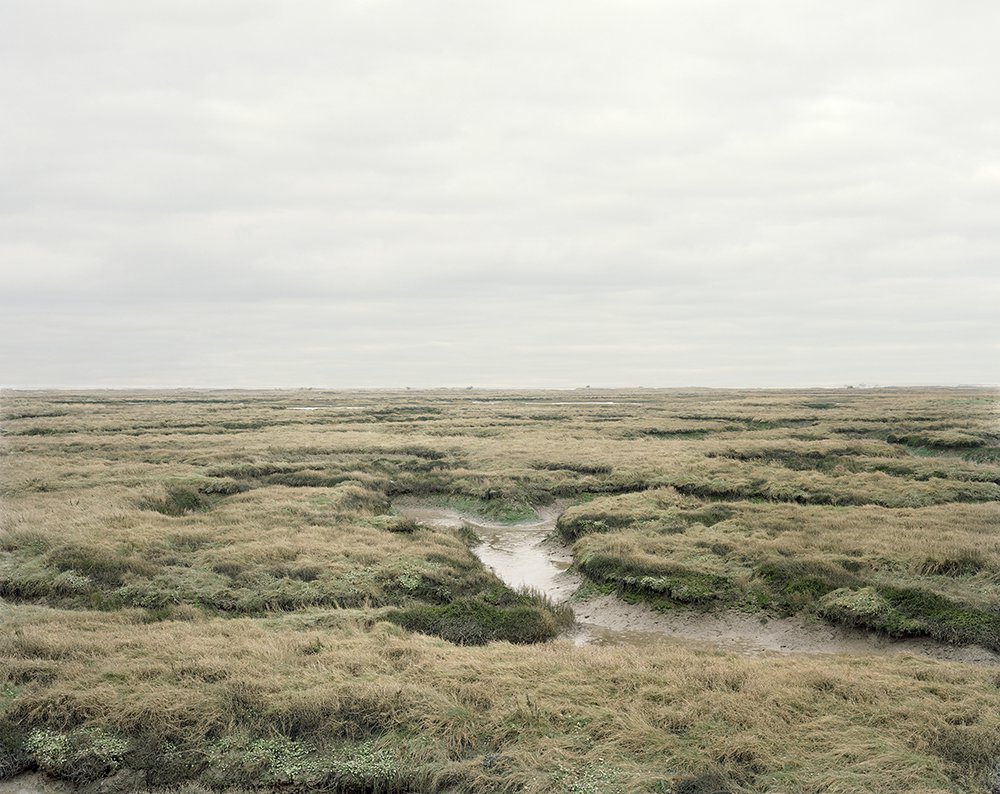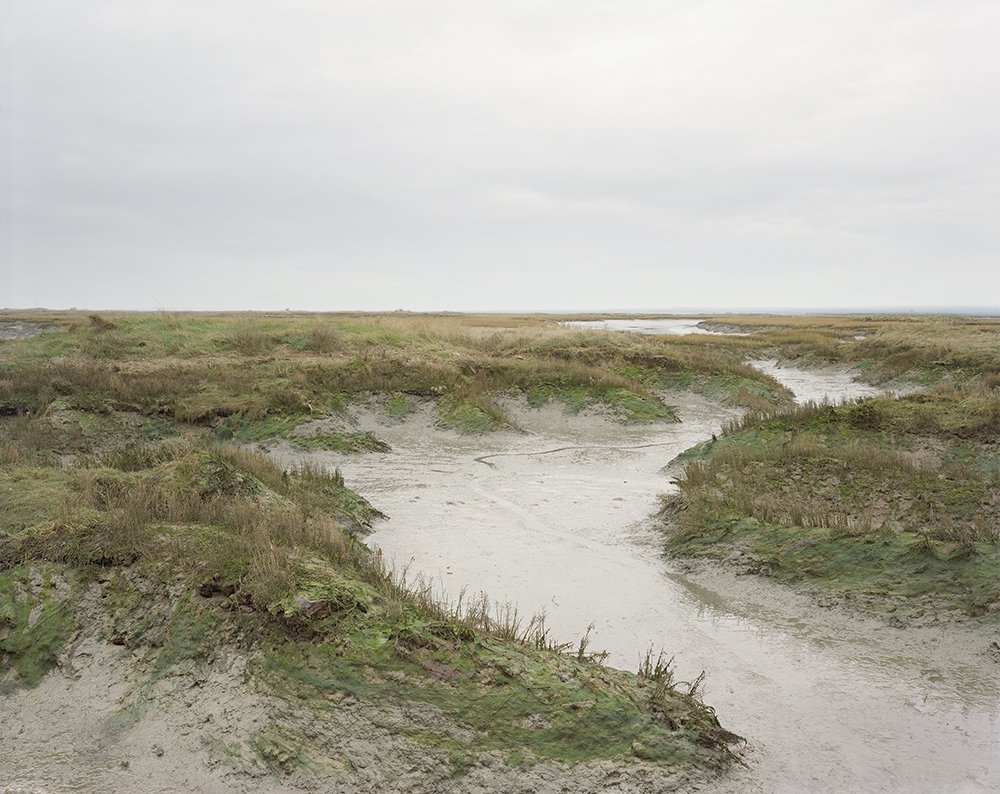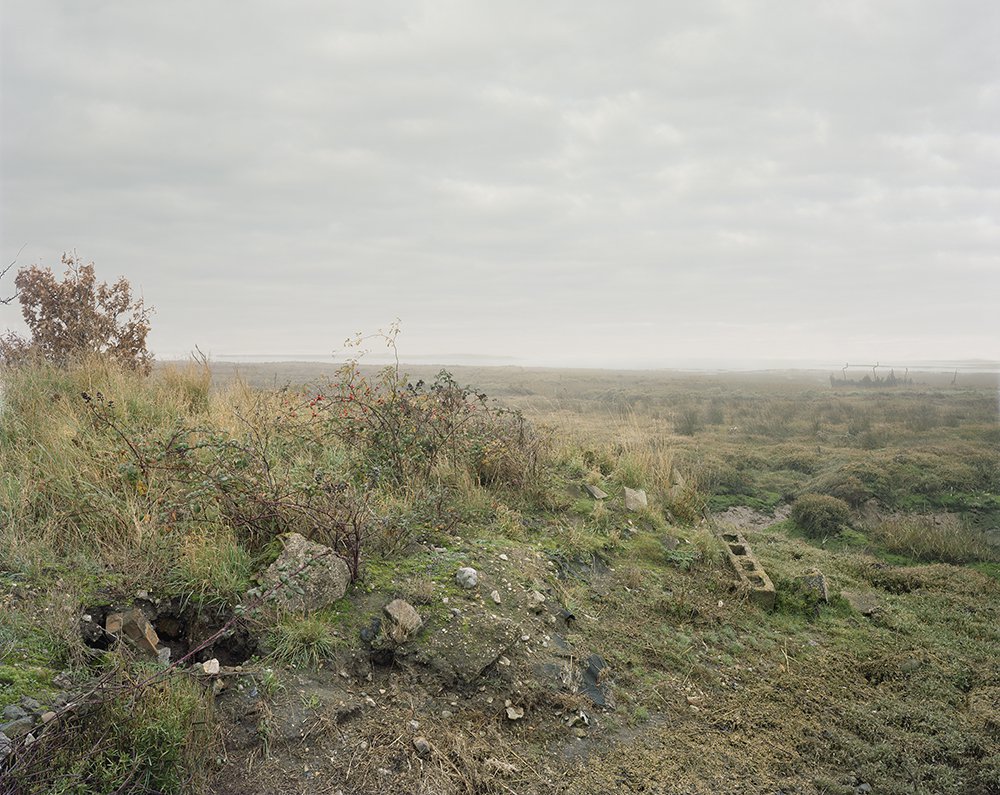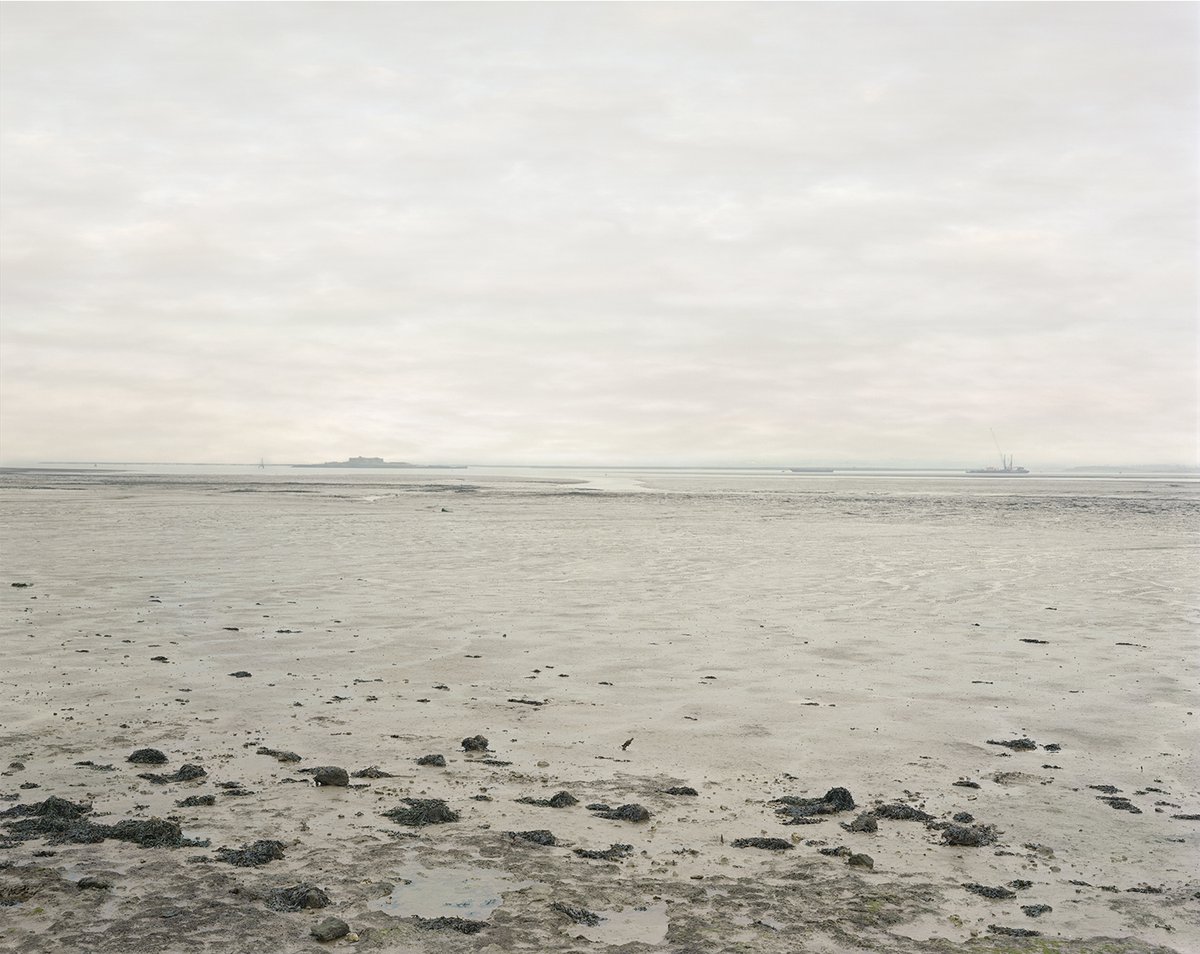Michael Collins
I hadn’t been aware of Michael Collins' work until Jason Orton recommended to have a look at it – and I was profoundly astounded his work, and in particular by this series on the Hoo Peninsula. Not only is it rather extensive – Collins examines the landscapes of the Hoo Peninsula in almost 40 (and counting) large-format photographs – but the work also speaks of enormous patience & determination. All taken in similar weather and light conditions, I can’t help thinking just how many trips he must have made to create this body of work, lugging a heavy plate camera over uneven and muddy terrain.
The photographs are of a certain dryness, a sobriety (Collins' inspiration is the "Record Picture" aesthetic), yet they are full of quiet poetry. And although each individual photograph itself is a great piece, it is in my view in the series that this body of work assumes its full, for want of another word, impact: this series of photographs with often repeating elements (pylons, hulks of barges, or ‘just’ flat marshland) represents a very detailed, nuanced and dense study of an extraordinary landscape. Particularly the repetition of motifs – there are several photographs of each subject, for example four of pylons on Grain Marsh – invites a more detailed interrogation, comparable to a portraitist photographing a sitter from different angles, and each of them emphasising different features / characteristics, but each one also a study in composition; how elements come together to form an image. There is a certain stillness to most works, inviting closer study; one can almost hear the crackle of the overhead power lines, the call of the curlew or the sound of the water receding from tidal flats. Most compositions are devoid of drama – at least on the surface, that is; the quietness invites to pause and contemplate what lies beyond and beneath.
The series has been published in a book in 2017 by German publisher Kettler – with an in-depth essay on the Hoo Peninsula by Roger Leverdier, and afterword by Collins himself, and both a historic and a contemporary map. I’m hoping though that one day I’ll get the chance to see the full-scale prints exhibited; thus far they’ve apparently only been shown abroad though.
For me personally, the Hoo Peninsula has become a rather special place – its openness and emptiness offering respite from life in a metropolis, and (probably aided by the fact that it is surprisingly easy to get there: a brief journey to Gravesend from Stratford, and within another 15 minutes bike ride one finds solitude and space to breathe) I keep returning to it whenever I get the chance. In the book though, neither Roger Leverdier’s essay nor Collin’s afterword give away much about actually what drew him out – and kept attracting him – to the place, for no doubt in order to result in such a large body of work the attraction must have been quite profound, so I contacted him and asked, and Michael was so kind to send a comprehensive reply:
“When I first began making large format landscapes, I was living in West Dorset and made a series of landscapes, seascapes, nature studies, and skies, all within a few miles of my home. Through choice and circumstance, I found no need to travel at all far from my home, and indeed, most of the pictures were made on foot. By concentrating on such a finite area, which I knew so well, I was able to engage in an intense way, and I found both a humility and an inspiration in working within such parameters. Familiarity brings knowledge and insight, and hopefully respect, and with it, a less superficial engagement.
This is the understanding that made me consider focusing on Hoo. I'd walked there several times and had found the landscape fascinating, and its proximity to London and relative peace and tranquility (leaving me to work undisturbed, most of the time) were positive attributes. To me, Hoo became both a place where I would go to find inspiration, and a kind of "landscape realm", which I could draw on as a form of "dynamic landscape studio". So I began by photographing the hulks at Hoo St Werburgh, trying to make compositions that brought out their sculptural and deteriorating condition, but with such precise depiction that the "here and now" of photography - the traces of the trickling tides, the weathered timbers in today's light - would place them, along with their history, in the recording of their contemporary state within the technical, aesthetic possibilities of contemporary photography now. So the large colour prints, without grain, with an astonishing degree of detail, faded paint alongside frayed plastic, would reveal not only the layers of historical weathering and decline, and marine resurgence, but subliminally reveal the layers of art history, too, from the camera obscura etc. survey drawings of ruins and precise nature studies, to the sober delivery of the photographic detail in the large scale contemporary photographic print. These Hoo 'Hulks" pictures came in for some criticism for "making it look as though it were 100 years ago", a criticism that dismayed and disappointed me, and one that I maintain was the result of not looking carefully, properly, at the pictures. Any sustained, scrupulous inspection of the pictures reveals details which place them in the last few years: the condition and range of the decaying materials; background details; the nature of the depiction of the "natural" landscape in which they are set - such a depiction explicitly places them within the most recent of contemporary photography, for when and how else could the mud and moisture and vegetation be presented photographically in such life-like realism?
I found that as I worked my way around the hulks, I was led by a combination of historical research (what were these boats doing here?) to the industry which they had served, and its location on the peninsula (the gault workings on Stoke Saltings) and it was here that I found myself facing the best of dilemmas. Stoke Saltings at low tide is one of the most beautiful sights I have ever seen, and yet I have never been able to make a landscape picture encompassing the sweep and contents of this bay. There is no high vantage point from which to photograph it, and I have not had the funds of means to construct, and leave in place, a high scaffolding etc. tower. Instead I found myself wandering within a landscape that I wished I could picture as a whole, an experience that made me actively confront the compositional quandary of how to make a nature study within a landscape - how to depict a small are within a larger area without loosing sight or meaning of the whole picture, as it were, of the place. How to picture a sense of the spatially immediate within the infinite? If there were one picture that manifested this quest it is 'South West across Stoke Saltings 2012'.
As the work developed, and I printed more and more large landscapes for shows in the U.S. (this work has never been shown in the U.K.) so I became more fascinated by the possibilities of getting the most out of the large photographic tableau. How to work against the typically flat picture of the photograph and how to bring out a greater, more tactile, sense of depth and sculptural realism? I have always been mindful of the eloquence of extending focus from the very foreground onwards, rather than focusing within, which flattens the photograph's appearance by artificially encompassing more of the content in focus without separating the distance between the foreground and the background. So I would deliberately select compositions that enabled me to do this (eg. 'Higham Bight 2012', 'Bee Ness Jetty 2012',) or more recently in the 'Hoo Flats' series, on which I continue to work.
I have never pretended nor assumed to try documenting the Hoo Peninsula. English Heritage did just that in their superb practice. I don't make photographs to explain or to convey anything; I use photography to make pictures; specifically 8x10 colour photography to make photographic tableaux. Appositely, the only clump of land on which I can place my tripod to photograph the viewpoint across Hoo Flats that works for my compositions is gradually being washed away, and by the end of this year's autumn tides, it will be no more. The landscape, after all, is dynamic, as are one's reasons for going there, either as a walker and or artist or both..”
